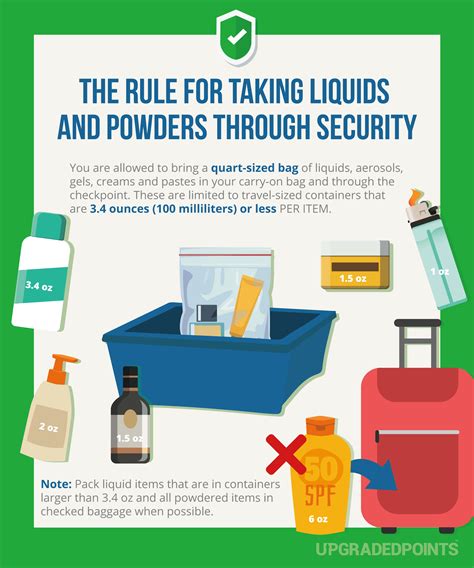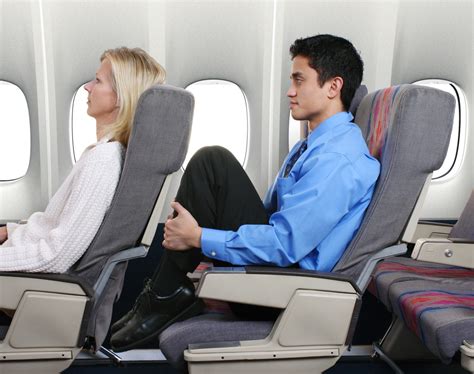
Overtourism in Palermo, Italy, has reached a critical point, prompting local residents to urge tourists to reconsider visiting in an effort to alleviate the strain on the city’s infrastructure and preserve its cultural integrity. The “Tourists Go Home” campaign, spearheaded by exasperated Palermitans, highlights the challenges posed by unsustainable tourism levels.
Palermo, a city celebrated for its rich history, vibrant street life, and stunning architecture, is grappling with the adverse effects of a tourism boom. As visitor numbers surge, the city’s infrastructure, resources, and the daily lives of its residents are increasingly strained, igniting a passionate plea for more sustainable tourism practices. The movement underscores a growing global concern as numerous cities worldwide confront similar challenges stemming from the relentless influx of tourists.
The “Tourists Go Home” campaign reflects rising tensions between locals and visitors in Palermo. Residents cite overcrowded streets, inflated prices, and the degradation of local culture as primary concerns. These issues are not unique to Palermo; cities like Venice, Barcelona, and Amsterdam have also witnessed similar anti-tourism sentiments as they struggle to balance the economic benefits of tourism with the need to protect the well-being of their communities and preserve their cultural heritage.
“We are not against tourism, but we are against unsustainable tourism that destroys our city and our way of life,” said Marco, a Palermo resident involved in the campaign, as quoted in local media. The campaign advocates for a more responsible and respectful approach to tourism, one that prioritizes the needs and concerns of the local population.
The Roots of the Problem
Palermo’s tourism surge can be attributed to several factors, including increased accessibility through budget airlines, the rise of online accommodation platforms like Airbnb, and the city’s growing popularity as a filming location for movies and television shows. The influx of tourists has undoubtedly brought economic benefits, with increased revenue for local businesses and job creation in the hospitality sector. However, these benefits have come at a cost.
The increased demand for accommodation has led to a shortage of affordable housing for locals, as landlords convert apartments into short-term rentals to cater to tourists. This has driven up rental prices and forced many residents out of their neighborhoods. Additionally, the influx of tourists has placed a strain on the city’s infrastructure, including public transportation, waste management, and water supply.
Furthermore, the commodification of local culture for tourism purposes has raised concerns about the authenticity and preservation of Palermo’s unique identity. Traditional businesses are being replaced by souvenir shops and restaurants catering to tourists, and local customs and traditions are being diluted to appeal to a wider audience.
A Call for Sustainable Tourism
The “Tourists Go Home” campaign is not simply about discouraging tourism; it is a call for a more sustainable and responsible approach to tourism management. The campaign advocates for policies that prioritize the needs of local residents, protect the environment, and preserve the city’s cultural heritage.
Some of the specific measures proposed by the campaign include:
- Regulation of short-term rentals: Implementing stricter regulations on platforms like Airbnb to limit the number of short-term rentals and ensure that landlords comply with safety and tax regulations.
- Investment in public infrastructure: Improving public transportation, waste management, and water supply to cope with the increased demand from tourists.
- Promotion of responsible tourism practices: Educating tourists about the importance of respecting local customs and traditions, supporting local businesses, and minimizing their environmental impact.
- Diversification of the tourism industry: Developing alternative tourism products and experiences that are less dependent on mass tourism, such as cultural tourism, ecotourism, and rural tourism.
- Tourist tax implementation: Implementation of tourist taxes to use revenue for the maintenance of public infrastructure.
Global Context and Lessons Learned
Palermo’s struggle with overtourism is not an isolated case. Many cities around the world are grappling with the same challenges, and some have already taken steps to address the problem.
- Venice, Italy: Venice has introduced a tourist tax and is considering limiting the number of visitors allowed into the city each day. The city also faces the unique challenge of cruise ships contributing to pollution and crowding.
- Barcelona, Spain: Barcelona has implemented a moratorium on new hotel construction and is cracking down on illegal tourist apartments. The city has also promoted alternative tourist routes and attractions to divert visitors away from the most crowded areas.
- Amsterdam, Netherlands: Amsterdam has introduced a tourist tax and is considering banning tour buses from the city center. The city is also promoting sustainable tourism initiatives, such as cycling and canal tours.
- Kyoto, Japan: Kyoto is grappling with the issue of “tourism pollution,” where the influx of visitors disrupts the daily lives of residents and damages the city’s cultural heritage. The city is promoting responsible tourism practices and encouraging visitors to explore lesser-known areas.
These examples highlight the importance of proactive and comprehensive tourism management strategies. Cities need to work together with local communities, tourism businesses, and government agencies to develop solutions that address the root causes of overtourism and promote a more sustainable and responsible tourism industry.
The Future of Tourism in Palermo
The “Tourists Go Home” campaign has sparked a debate about the future of tourism in Palermo. While the campaign has faced some criticism from those who argue that it is anti-tourism, it has also raised awareness about the negative impacts of overtourism and the need for a more sustainable approach.
The city government has acknowledged the concerns raised by the campaign and has pledged to take action to address the problem. However, it remains to be seen whether these efforts will be enough to alleviate the strain on the city and preserve its unique cultural identity.
The success of Palermo’s efforts to manage tourism will depend on the willingness of all stakeholders to work together to find solutions that balance the economic benefits of tourism with the need to protect the environment, preserve cultural heritage, and improve the quality of life for local residents.
The situation in Palermo serves as a cautionary tale for other cities that are experiencing rapid tourism growth. By learning from Palermo’s experiences and implementing proactive tourism management strategies, these cities can avoid the negative consequences of overtourism and ensure that tourism benefits both visitors and residents alike.
In-Depth Analysis: The Socio-Economic Impact of Overtourism
Overtourism’s impact extends far beyond simple inconvenience; it deeply affects the socio-economic fabric of a city like Palermo. The surge in tourist numbers directly correlates with rising living costs for residents. As demand for short-term rentals skyrockets, landlords often prioritize tourist accommodation over long-term leases, leading to a scarcity of affordable housing for locals. This displacement effect can force long-time residents out of their neighborhoods, disrupting community bonds and eroding the social cohesion that defines the area’s character. The “Tourists Go Home” campaign encapsulates this sentiment, highlighting how unchecked tourism can inadvertently transform a city into a playground for visitors at the expense of its inhabitants.
The commodification of local culture represents another significant concern. Traditional businesses, which once catered to the everyday needs of residents, are increasingly replaced by souvenir shops and restaurants designed to appeal to tourist tastes. This shift can lead to the homogenization of the city’s identity, diluting the unique cultural traditions that make Palermo distinct. Artisans and small business owners, who are the custodians of local heritage, may struggle to compete with larger, tourist-oriented enterprises, further contributing to the erosion of local character. The focus shifts from preserving authenticity to creating a sanitized version of the city tailored for tourist consumption.
Beyond the economic and cultural implications, overtourism can also strain local infrastructure. Public transportation systems, designed to serve the needs of residents, become overcrowded and inefficient as tourist numbers surge. Waste management systems struggle to cope with the increased volume of waste generated by visitors, leading to environmental degradation and public health concerns. Water resources, already under pressure in many regions, can be further depleted by the demands of the tourism industry. The “Tourists Go Home” movement isn’t just about reducing the number of visitors; it’s about ensuring that the city’s infrastructure can sustainably support both residents and tourists without compromising the quality of life for anyone.
The environmental impact of overtourism cannot be ignored. Increased air and noise pollution from transportation, the destruction of natural habitats to make way for tourist infrastructure, and the over-consumption of resources all contribute to environmental degradation. Coastal cities like Palermo are particularly vulnerable, as tourism can exacerbate issues such as beach erosion, marine pollution, and damage to fragile ecosystems. Sustainable tourism practices are essential to mitigate these environmental impacts and ensure that future generations can enjoy the natural beauty of these destinations. The campaign highlights the need for a more responsible and ecologically conscious approach to tourism development.
Policy Recommendations and Potential Solutions
Addressing the challenges of overtourism requires a multifaceted approach involving collaboration between local governments, tourism businesses, and residents. Policy interventions must focus on managing tourist flows, promoting sustainable practices, and protecting the interests of local communities.
One key policy recommendation is the implementation of tourist taxes. These taxes, levied on visitors through hotel stays or other tourist services, can generate revenue that can be used to fund infrastructure improvements, support local businesses, and mitigate the negative impacts of tourism. The revenue generated from tourist taxes can be reinvested in the city to improve public services, enhance cultural preservation efforts, and promote sustainable tourism initiatives.
Another important measure is the regulation of short-term rentals. Platforms like Airbnb have contributed significantly to the problem of overtourism by facilitating the conversion of residential properties into tourist accommodations. Stricter regulations, such as limiting the number of short-term rentals allowed in certain areas, enforcing safety and tax compliance, and ensuring that landlords obtain proper permits, can help to address the housing shortage and prevent the displacement of local residents.
Promoting responsible tourism practices is also crucial. This includes educating tourists about the importance of respecting local customs and traditions, supporting local businesses, and minimizing their environmental impact. Tourist information centers, online resources, and tour operators can play a vital role in disseminating this information and encouraging tourists to make responsible choices. Furthermore, promoting off-season tourism and diversifying tourist attractions can help to spread tourist flows more evenly throughout the year and reduce congestion in popular areas.
Investing in public infrastructure is essential to ensure that cities can cope with the demands of tourism. This includes improving public transportation systems, upgrading waste management facilities, and expanding water and sanitation services. These investments not only benefit tourists but also improve the quality of life for local residents.
Finally, fostering community engagement is crucial for the success of any tourism management strategy. Local residents should be involved in the planning and decision-making processes related to tourism development. This can help to ensure that their concerns are addressed and that tourism benefits the entire community.
The Role of Technology in Managing Tourism
Technology can play a significant role in managing tourist flows and promoting sustainable tourism practices. Smart city technologies, such as real-time traffic monitoring, crowd management systems, and mobile apps, can help to optimize resource allocation, reduce congestion, and improve the tourist experience.
Real-time traffic monitoring systems can provide valuable data on tourist movements, allowing city officials to identify congestion hotspots and implement traffic management measures. Crowd management systems can use sensors and cameras to monitor crowd densities in popular areas and provide alerts when overcrowding occurs. Mobile apps can provide tourists with information on alternative routes, less crowded attractions, and sustainable tourism options.
Furthermore, technology can be used to promote cultural heritage and enhance the tourist experience. Virtual reality and augmented reality applications can bring historical sites and cultural artifacts to life, providing tourists with immersive and interactive experiences. Digital storytelling platforms can share the stories of local residents and highlight the unique cultural traditions of the city.
By leveraging technology, cities can better manage tourist flows, promote sustainable practices, and enhance the tourist experience, while also protecting the interests of local communities.
Case Studies: Successful Tourism Management Strategies
Several cities around the world have successfully implemented tourism management strategies to address the challenges of overtourism. These case studies provide valuable lessons for other cities that are grappling with similar issues.
Amsterdam, Netherlands: Amsterdam has implemented a range of measures to manage tourism, including a tourist tax, a ban on new hotel construction in certain areas, and a crackdown on illegal tourist apartments. The city has also promoted sustainable tourism initiatives, such as cycling and canal tours, and has invested in public transportation infrastructure. These efforts have helped to reduce congestion in the city center and promote a more sustainable tourism industry.
Barcelona, Spain: Barcelona has implemented a moratorium on new hotel construction and has cracked down on illegal tourist apartments. The city has also promoted alternative tourist routes and attractions to divert visitors away from the most crowded areas. Furthermore, Barcelona has invested in public transportation infrastructure and has promoted sustainable tourism practices. These efforts have helped to alleviate the strain on the city’s infrastructure and protect the interests of local residents.
Venice, Italy: Venice has introduced a tourist tax and is considering limiting the number of visitors allowed into the city each day. The city also faces the unique challenge of cruise ships contributing to pollution and crowding. Venice is exploring various options to manage cruise ship traffic, including limiting the number of ships allowed to dock in the city and rerouting ships to alternative ports. These efforts aim to protect the city’s fragile ecosystem and preserve its cultural heritage.
Kyoto, Japan: Kyoto is grappling with the issue of “tourism pollution,” where the influx of visitors disrupts the daily lives of residents and damages the city’s cultural heritage. The city is promoting responsible tourism practices and encouraging visitors to explore lesser-known areas. Kyoto is also working to preserve its cultural heritage by restoring historical sites and supporting traditional crafts. These efforts aim to balance the economic benefits of tourism with the need to protect the city’s unique cultural identity.
Conclusion: Towards a Sustainable Future for Tourism
The “Tourists Go Home” campaign in Palermo highlights the growing tensions between locals and tourists in cities around the world. Overtourism poses significant challenges to local communities, including rising living costs, the commodification of local culture, and strain on infrastructure. Addressing these challenges requires a multifaceted approach involving collaboration between local governments, tourism businesses, and residents.
By implementing policies that manage tourist flows, promote sustainable practices, and protect the interests of local communities, cities can create a more sustainable and responsible tourism industry. Tourist taxes, regulation of short-term rentals, promotion of responsible tourism practices, investment in public infrastructure, and community engagement are all essential components of a comprehensive tourism management strategy.
Technology can also play a significant role in managing tourist flows and promoting sustainable tourism practices. Smart city technologies, such as real-time traffic monitoring, crowd management systems, and mobile apps, can help to optimize resource allocation, reduce congestion, and improve the tourist experience.
The case studies of Amsterdam, Barcelona, Venice, and Kyoto provide valuable lessons for other cities that are grappling with the challenges of overtourism. By learning from these examples and implementing proactive tourism management strategies, cities can avoid the negative consequences of overtourism and ensure that tourism benefits both visitors and residents alike.
The future of tourism depends on our ability to create a more sustainable and responsible industry that respects local cultures, protects the environment, and improves the quality of life for local residents. The “Tourists Go Home” campaign in Palermo is a wake-up call that reminds us of the urgent need to address the challenges of overtourism and create a more equitable and sustainable future for tourism.
Frequently Asked Questions (FAQ)
-
What is the “Tourists Go Home” campaign in Palermo, Italy?
The “Tourists Go Home” campaign is a movement initiated by residents of Palermo, Italy, expressing their concerns about the negative impacts of overtourism on their city. These concerns include overcrowding, rising living costs, damage to local culture, and strain on infrastructure. The campaign aims to raise awareness and advocate for more sustainable tourism practices.
-
What are the main concerns of Palermo residents regarding tourism?
Palermo residents are primarily concerned about:
- Rising living costs, particularly housing, due to the increase in short-term rentals.
- The commodification and dilution of local culture as businesses cater more to tourist tastes.
- Overcrowding of public spaces and strain on local infrastructure like transportation and waste management.
- The displacement of long-term residents due to tourism-related economic pressures.
-
What measures are being proposed to address overtourism in Palermo?
The “Tourists Go Home” campaign and other local advocates have proposed several measures, including:
- Regulation of short-term rentals (e.g., Airbnb) to control housing availability and costs.
- Investment in public infrastructure to handle the increased demand from tourists.
- Promotion of responsible tourism practices among visitors.
- Diversification of the tourism industry to offer alternative, less crowded experiences.
- Implementation of a tourist tax to generate revenue for infrastructure maintenance and local community support.
-
How does the situation in Palermo compare to other cities struggling with overtourism?
Palermo’s situation is similar to that of other popular tourist destinations like Venice, Barcelona, and Amsterdam, which are also experiencing negative impacts from overtourism. Common issues include housing shortages, cultural dilution, infrastructure strain, and environmental concerns. These cities are experimenting with various strategies, such as tourist taxes, restrictions on short-term rentals, and promotion of sustainable tourism, to mitigate the negative effects of overtourism.
-
What can tourists do to contribute to more sustainable tourism in Palermo?
Tourists can contribute to more sustainable tourism in Palermo by:
- Respecting local customs and traditions.
- Supporting local businesses and artisans.
- Minimizing their environmental impact (e.g., reducing waste, conserving water and energy).
- Exploring lesser-known areas of the city to avoid overcrowding popular sites.
- Choosing accommodations and tour operators that prioritize sustainability and community benefit.
- Being mindful of their behavior and its impact on the daily lives of residents.
- Educating themselves on the issues associated with overtourism and make informed travel decisions.









